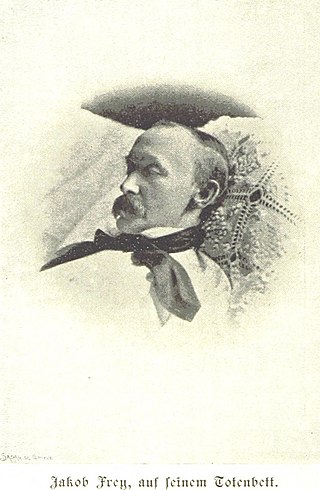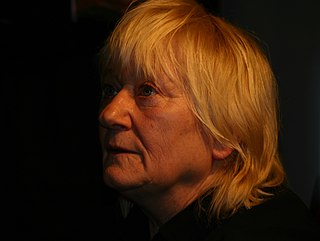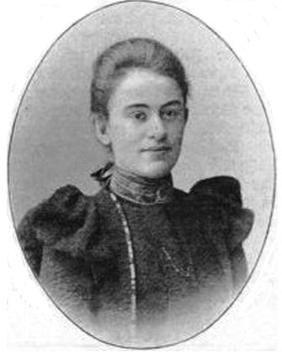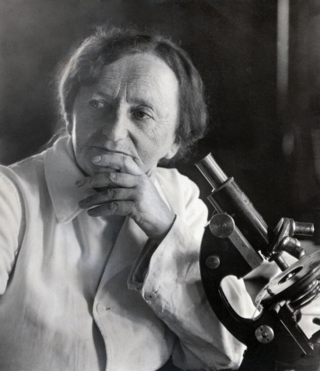
Albert Einstein was a German-born theoretical physicist, widely acknowledged to be one of the greatest and most influential physicists of all time. Einstein is best known for developing the theory of relativity, but he also made important contributions to the development of the theory of quantum mechanics. Relativity and quantum mechanics are the two pillars of modern physics. His mass–energy equivalence formula E = mc2, which arises from relativity theory, has been dubbed "the world's most famous equation". His work is also known for its influence on the philosophy of science. He received the 1921 Nobel Prize in Physics "for his services to theoretical physics, and especially for his discovery of the law of the photoelectric effect", a pivotal step in the development of quantum theory. His intellectual achievements and originality resulted in "Einstein" becoming synonymous with "genius". Einsteinium, one of the synthetic elements in the periodic table, was named in his honor.

Mileva Marić, sometimes called Mileva Marić-Einstein, was a Serbian physicist and mathematician and the first wife of Albert Einstein from 1903 to 1919. She was the only woman among Einstein's fellow students at Zürich Polytechnic and was the second woman to finish a full program of study at the Department of Mathematics and Physics. Marić and Einstein were collaborators and lovers and had a daughter Lieserl in 1902, whose fate is unknown. They later had two sons, Hans Albert and Eduard.

Elsa Einstein was the second wife and cousin of Albert Einstein. Their mothers were sisters, thus making them maternal first cousins. Further, their fathers were first cousins, making the couple paternal second cousins too. Elsa had the surname of Einstein at birth, lost it when she took the name of her first husband Max Löwenthal, and regained it in 1919 when she married her cousin Albert.
Madeleine Herren-Oesch is a Swiss historian.

The Einstein family is the family of physicist Albert Einstein (1879–1955). Einstein's great-great-great-great-grandfather, Jakob Weil, was his oldest recorded relative, born in the late 17th century, and the family continues to this day. Albert Einstein's great-great-grandfather, Löb Moses Sontheimer (1745–1831), was also the grandfather of the tenor Heinrich Sontheim (1820–1912) of Stuttgart.

Michele Angelo Besso was a Swiss-Italian engineer best known for working closely with Albert Einstein.
Dimitar Janakiew Inkiow was a Bulgarian writer.

Karl Stauffer, known as Karl Stauffer-Bern was a Swiss painter, etcher and sculptor.
Hanna Johansen, born Hanna Margarete Meyer, is a Swiss writer.

Jakob Frey was a Swiss writer of short stories about peasant life. He used the pseudonyms J. Reif, F. Kuhn, F. Imhoof, and J. A.

Silja Walter was a Swiss author and Benedictine nun in the Fahr Abbey in Switzerland. Born as Cécile Walter in Rickenbach, Solothurn, in Switzerland, at the age of 30 she became a nun: her religious name was Maria Hedwig (OSB). Her brother, Otto F. Walter, was also a popular Swiss author.

Grete Weil was a German writer.

Carmen-Maja Antoni is a German actress.

Jost Winteler was a Swiss professor of Greek and history at the Kantonsschule Aarau, a linguist, a "noted" philologist, an ornithologist, a journalist, and a published poet. He served as both a mentor and father figure to a teenage Albert Einstein, who boarded at his home from October 1895 to October 1896, while he attended his final year of secondary school.

Anna Tumarkin was a Russian-born, naturalized Swiss academic, who was the first woman to become a professor of philosophy at the University of Bern. She was the first woman in Europe to be allowed to examine doctoral and professorial candidates and the first woman to sit as a member of a University Senate anywhere in Europe.
Gertrud Meili-Dworetzki was a Swiss psychologist.

Sophia Getzowa was a Belarusian-born pathologist and scientist in Mandatory Palestine. She grew up in a Jewish shtetl in Belarus and during her medical studies at the University of Bern, she became engaged to Chaim Weizmann, who would become the first president of Israel. Together they worked in the Zionist movement. After a four year romance, Weizmann broke off their engagement and Getzowa returned to her medical studies, graduating in 1904. She carried out widely cited research on the thyroid, identifying solid cell nests (SCN) in 1907.
Elsa Herrmann Pick was a Jewish German feminist writer and refugee advocate. She is best known for her 1929 book This is the New Woman.
Milena Moser is a Swiss writer. Her first language is Swiss German. She has emigrated to the United States twice, in 1998 and again in 2015, but German remains the language in which she writes, and in which by 2018 more than twenty of her novels had been published.
Franziska Martienssen-Lohmann, née Meyer-Estorf was a German soprano who focused on Lieder singing, and a voice teacher who gave master classes internationally, in collaboration with her husband. She wrote books about teaching singing which have remained standards in the field.














